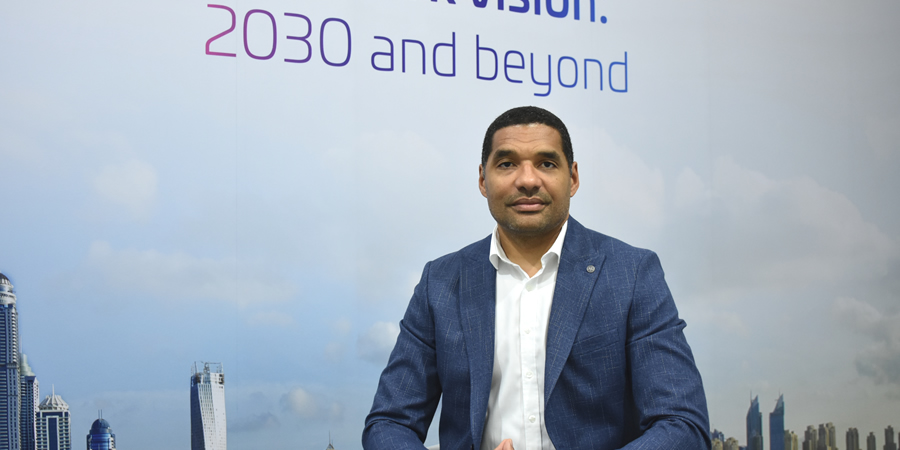In this exclusive interview, Femi Oshiga, VP of sales, service providers, MEA & APAC at CommScope, discussed how they, as a leading network infrastructure provider, help telecom operators in deploying 5G and continuously contribute to the digital transformation of the industry at large.
5G deployments are gaining momentum regionally and globally. How is CommScope supporting network operators to run 5G networks while also integrating with the existing legacy networks for a smooth transition to 5G?
Network providers have a challenge today — they have a lot of spectrum and they have to deploy 2G/3G/4G and now 5G networks. They have to do it with their existing assets, particularly the tower space on their cell sites. We help them in a number of different ways. Firstly, by producing high port count antennas in the smallest possible footprint and weight. We also adopt new technologies integrated into the same antenna, so whether it’s FTD or TDD, we're trying to put that into one enclosure. And more recently, we have our MOSAIC product that we’re showcasing here at GITEX and that involves combining active and passive antennas into one solution.
We all get excited about 5G, but we must not forget the fundamentals coming back to certain types of equipment, but also antennas, cables, filter infrastructure and so on. We help the operators by producing best-in-class antennas. We make sure that these can accommodate technologies pre-5G and make sure that they have a future-proof and abundance of capacity to take on all the challenges that 5G places on them.
We also have to make sure that these types of equipment are capable of additional traffic and that they have longevity in the networks. We think we do this best because that's exactly our mindset when we produce our equipment.
Energy efficiency has become the buzzword across various industry verticals. How is CommScope achieving the green ICT goals and who are your collaborators in this mission to develop sustainable networks?
It’s a whole ecosystem. To start with, there are two huge aspects we follow to ensure energy-efficient solutions: having low energy input and using recyclable materials. We also try to make sure that the power consumption of our production is as low as possible.
Lately, we’re thinking of ways to take equipment post-deployment back to the factory and see where we can recycle it. We have a number of partners helping us in this journey: our material providers, network operators and even end users. We can all work together in making sure that we bring the overall energy-used carbon footprint down to levels that are most sustainable for the future.
The metaverse economy is set to disrupt the digital landscape. How is CommScope contributing to this transformation? What are the challenges and opportunities?
Let’s start with the challenges. Basically, you need high-bandwidth networks with low latency. We need to build upon this capability. You need the right set of equipment at every cell site. In fact, you need to densify cell sites to make sure that you have this full coverage. CommScope solutions provide options for operators depending on the different scenarios, cost of ownership or expected return on investment in delivering the required solutions.
Moving on, the opportunities are endless. We’ve seen a lot of demonstrations here in GITEX, and I think we’re just at the tip of the iceberg. More professional services like healthcare and transport will be involved later on in the metaverse.
How do you see the demands from service providers evolving in the near future, and how will CommScope be impacted by these?
Service providers are the people that provide us with all the juice that we're using on our phones — the connectivity that we need. If you think of how important our phones are to us today, you can imagine that they will be very relevant in everybody's lives in the years to come. They are the providers of the utility that we cannot do without. For them to differentiate themselves in this realm, they have to provide specific, unique and interesting use cases; that becomes their challenge. They will all have different degrees of success depending on the use cases they bring out there. That’s the excitement of our industry, and that's where we look forward to collaborating with the MNOs.
